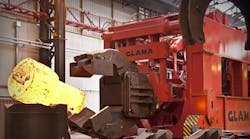The French nuclear regulatory agency Autorité de Sûreté Nucléaire (ASN) has confirmed a discovery of safety-defects in about 400 forged parts produced since 1965 for nuclear reactors built by Areva. The agency narrowed its statement to indicate about 50 of the parts are installed in nuclear reactor plants operating in France. It did not comment on any forgings that may have been installed in reactors elsewhere.
France has 19 nuclear power plants that consist of 58 nuclear reactors, which supply an estimated 75% of the nation's electricity. Those plants are operated by a utility, Électricité de France (EDF), which is slated to take over the nuclear-reactor construction business that Areva developed.
Areva is a multinational organization active in nuclear energy system design, development, and operation. Its European Pressurized Reactor (EPR) pressurized-water nuclear reactors are installed at numerous power plants in Europe, and more recently in China.
The inquiry was initiated more than a year ago after weaknesses were discovered in forged steel parts supplied for the EPR III being built at Flamanville, France. ASN. Areva’s Creusot Forge subsidiary produces large-dimension steel forgings needed in the construction of nuclear reactor vessels.
Creusot Forge produced the upper and bottom sections of the reactor pressure vessel being installed by Areva for the Flamanville EPR in September 2006 and January 2007, using now-outdated standards for carbon content in the steel, according to reports. The suspected weakness in the forgings is based on testing conducted according to subsequently implemented, more stringent regulatory standards.
Forging is an IndustryWeek companion site within Penton's Manufacturing & Supply Chain Group.




